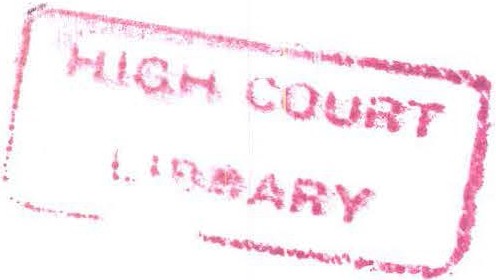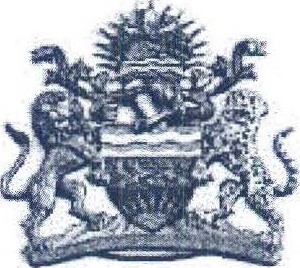![]()



IN THE HIGH COURT OF MALAWI
PRINCIPAL REGISTRY
CRIMINAL DIVISION
CRIMINAL APPEAL NO. 12 2016
VONA KAMOWA .........................................................APPELLANT
-V-
THE REPUBLIC.......................................................... RESPONDENT
Coram: Hon. Justice M L Kamwambe
Mickeus/Kamkwasi of counsel for the Appellant
Banda of counsel for the State
Amos ...Official Interpreter

![]()
JUDGMENT
Kamwambe J
This is a petition of appeal made under section 350 of the Criminal Procedure and Evidence Code. The 23 year old Appellant was charged with the offence of defilement of a girl under the age of 16 years and was on 4th January, 2016 sentenced to 9 years imprisonment after conviction. He has levelled several grounds of appeal as follows:
l. The trial magistrate erred in law and fact by giving weight to the testimony of Esther Mbewe's father who did not testify.
2. The trial Magistrate erred in law in finding that the accused person had confessed to the offence of defilement.
Particulars
The accused person only admitted sleeping with the complainant
3. The trial Magistrate erred in law by imposing a witness on the defence to prove the age of the complainant
PARTICULARS
The accused person had applied for the production of the complainant to be examined by Dr Kampondeni, who is the only physician in Malawi possessing equipment to assess age.
4. The Trial Magistrate erred in law when exercising her powers under section 20 l of the Criminal Procedure and Evidence Code by taking over the prosecution of the case.
PARTICULARS
The trial Magistrate should not have authorised letter marked IDD 1 which clearly demonstrated the trial Magistrate's prejudice against the Accused person.
5. The trial Magistrate erred in law and fact and deliberately concealed (in her judgement) salient parts of the testimony of purported defence witness DW2.
Particulars
5. 1. The trial Magistrate did not disclose that DW2 indicated that his place of work did not have equipment to assess exact age.
5.2. DW2 also stated that the complainant would be of any
![]()
5.3. The trial Magistrate did not at all allude in her judgement to the medical report tendered by DW2 as exhibit D1.
6. The trial Magistrate erred in law by not considering the Accused person' s defence and analysing the same with reference to the proviso to section 138 (2) of the Penal Code.
Particulars
The accused Magistrate did not address in her judgement any issues raised by the Accused person's submissions.
7. The trial Magistrate erred in law by violating the Criminal Procedure (Documentary Evidence) Rules by admitting Photostat copies of documents not originally served and tendered but which were only introduced by Dr. Kennedy (the purported defence witness) .
8. The sentence is manifestly excessive for young offender like the Accused person herein.
Section 138(1) of the Penal Code under which the Appellant was charged reads as follows:
"Any person who carnally knows any girl under the age of sixteen years shall be guilty of a felony and shall be liable to imprisonment for life.
Provided that it shall be a sufficient defence to any charge under this section if it shall be made to appear to the court, jury or assessors before whom the charge shall be brought that the person so charged had reasonable cause to believe and did in fact believe that the girl was of or above the age of sixteen years. "
It is imperative for the prosecution to prove that there was penetration, and that the girl was under the age of sixteen years. It appears that it is irrelevant whether the offender knew of the age of the girl or not. When you go out with any girl you take a risk that the girl will turn out to be sixteen. This is a departure from the case of Maloza Manda -v- The State Criminal Appeal Case No. 21 of 2010 Mzuzu District Registry which says that the prosecution has also to prove that the accused person had knowledge or ought to have known that the girl was under sixteen. Whether one knew or failed to make an effort to know the age of the girl is not an important ingredient of the offence. However, under the proviso, a defence is created if circumstances are shown by the offender to the satisfaction of the court that the offender had reasonable cause to believe and did believe that the girl was above the age of sixteen. This will only arise after the prosecution has laid down its case or the two important ingredients of the offence stated above.
The issue about evidence of age of the girl was dealt with by PW2 the mother of the girl who testified that the daughter was born on 6th June 2000 and as such she was 15 years old. This is sufficient evidence of the girl's age. The court in Chipala -v- Rep. [1993] 16 (2) MLR 498 at 499 stated:
"It seems to me that other than a certificate of a medical practitioner, or his oral testimony, to the effect that, in his opinion, such a person has or has not attained a specified age, or other documentary proof, or the testimony of a person who has personal knowledge gained at the time of such person's birth, such as parents, no other evidence is receivable as proof of the age of such a person."
As to her age, it was not necessary to refer to the medical report (Exhibit D1) of Dr Neil Kennedy (DW2) which was not conclusive on the issue of age. However, the medical report would
'"'"'"'°""·I
be conclusive evidence of her age if the mother had not testified. Fortunately, the medical report also mentions the age of 15 in that she was born on 6th June, 2000.
There is no dispute that the Appellant had carnal knowledge of the girl. The lower court judgment at page 2 says:
"He testified that indeed he was in love with PW1 from 2014 and had sexual intercourse with her for over 36 times. He further testified that when he met PW1, she told her that she was 16 years old. He believed it when he had sexual intercourse with her for the first time because her vagina was big which meant that she was 25 years old. "
What one observes is that the Appellant seeks the application of the statutory defence because in his belief the girl was more than 16 years of age. The question is how is the statutory defence applied? The operative words are, 'if it shall be made to appear to the court ...that the person so charged had reasonable cause to believe and did in fact believe that the girl was of or above the age sixteen years,' (my emphasis). This means that the court must be satisfied that the offender has provided in the mind of the court good reason to believe that the girl was above sixteen years old. We have to find out how the offender satisfied or convinced the court about his belief of the girl's age. We should consider how the lower court analysed the facts in response to the statutory provision. The lower court at page 7 said as follows:
"The accused's reasonable belief is stemming from the fact that when he had sexual intercourse with PW1, he found out that her vagina was big and that meant that she was 25 years old. He did not bring any medical proof to show that a woman's vagina gets big as she grows older and you can ascertain the age of a woman by the size of her vagina.
The accused testified that when he proposed Jove to PW 1, she told him that she was 16 years old while PW 1 testified that she told him that she was 14 years old. This court had the occasion of seeing PW 1 in court as she was giving her evidence. Any reasonable person seeing her would conclude that she is not over sixteen years. She looks so young that she can be mistaken for a 13 year old yet she is pregnant now. M ay be as the pregnancy progresses, she will look older. This court finds that the accused must have or ought to have known that PW 1 is a child under the age of 16 years and should not have had sex with her."
The accused failed to convince the court that he had reasonable belief that the girl was safely above 16 years. The court was not convinced that the girl told him that she was 16 years old. When a girl looks 10 years old and she tells you that she is 17 years old, you are expected to assess the situation and convince yourself and any reasonable person including the court that it would think likewise, that the girl is 17, otherwise, you are taking a risk of the girl turning out to be 10 as she looks. The lower court adequately covered the statutory defence under the proviso. In the circumstances, it did not appear to the lower court that the Appellant had a reasonable belief that the girl was above 16 years old. The proviso should be interpreted strictly so that it does not provide opportunity to men to abuse unsuspecting girls.
I do not think I have any reason to fault the judgment of the lower court, as such, I find that the appeal fails.
The listed grounds of appeal would not bring a different outcome I do not intend to waste time tackling them at length.
Under section 201 of the Criminal Procedure and Evidence Code the court is given large latitude to choose to summon any person to testify so long as his or her evidence appears to the court to be essential to the making a just decision. Even if the medical doctor (Dr Kampondeni) chosen by the defence was not summoned to testify, it would not make much difference if he did testify as the issue as to age was adequately concluded by the testimony of the girl’s mother and the health passport which indicated the date of her birth. Further, it was not material that the medical report tendered by DW2 was not alluded to in the judgment of the lower court as it had no evidential value. In any case, according to ground 7 of the grounds of the petition of appeal, the report as a document of Dr Kennedy would be inadmissible and unusable since the Photostat copies were not served on the offender to allow them to be used in court as evidence. The trial magistrate did not base her finding of guilt on this report and did well not consider it in her judgment as observed by the Appellant.
I have tried to cover all the seven grounds of appeal as to conviction and I am contented that conviction was proper and I find that the appeal on conviction fails.
I now come to tackle the 8th and last ground of appeal that the sentence is excessive. This is the time when consent sexual intercourse by the girl becomes relevant as a mitigating factor. The girl was big enough at 15 to give consent as she knew what she was engaging in, and according to evidence of the Appellant, the girl had lots of sexual experience. However, I have noted some measure of coercion or threatening behaviour by the Appellant influencing the girl to comply with his demands for sex. She admitted he was his boyfriend. This is what she said at page 8 of the lower court judgment:
![]()
"He asked me about his ....and I told him that I didn't want him and he forced me to. Due to fear, I accepted him.
So we had ......while being forced. One day he told me to go to Chadzunda, we met there at the rest house and he told me to have sexual intercourse with him. I refused and forced me. He took off my clothes and he also took off his clothes. He laid me down on the bed and laid on top of me and he took his penis into my vagina. We then had sexual intercourse.
Later, I went to school and got sick. So I came back, so the accused started asking me for sex. I intended to inform my mum but I told my neighbour. My neighbour said she will see what she can do. "
The girl victim went further to testify at page 10 that:
"One day I met the accused again on the road. He asked me why I wasn't answering his greetings. I told him that I met his wife and she beat me up and told me to stop going out with him. So the accused said if I stop going out with him, he will beat me up and I should be doing what he wanted. So I started doing what he wanted."
The above testimony of the girl victim shows a picture of the Appellant dominating over the girl victim who wanted the affair to come to an end. This is why she wanted to inform the mother, but she was not bold enough to do so. Instead, she told a neighbour who did not appreciate the plight and anguish of the girl and the urgency of the matter. It is sad that the Appellant had found easy prey and defiled her so many times. This is an aggravating factor. However, he is a first offender who should be treated leniently.
"'"'""""'OM I
The court will not lose sight of the fact that this offence is a serious one by nature and it is beyond any reasonable imagination that a non-custodial sentence is appropriate.
In Rep - v- Stephano Boniface Confirmation Case No. 215 of 2008 a 4 year sentence was enhanced to 8 years imprisonment. The convict was young and first offender. The court said that this offence is serious as it has a long lasting psychological trauma on the victim and children ought to be protected from such perpetrators.
In Republic - v- Albino Antonio Confirmation Case No. 979 of 2009, the convict relatedly defiled a 4 year girl child. He was sentenced to 10 years IHL. He was a first offender. On confirmation the sentence was enhanced to 12 years IHL.
In Republic - v - Mailosi Mvuhula Confirmation Case No. 347 of 2008, the convict was sentenced to 60 months IHL as a young first offender who pleaded guilty, He defiled his 5 year daughter. On confirmation the sentence was raised to 8years IHL. In my court I would have raised further the sentence to over 10 years.
In Republic - v- Brian Matiya Confirmation Case No. 161 of 2008 the court said that pleas of being a young and first offender should not be entertained because the interest should be on the girl ' s life and that if we entertain such, we are killing our society.
As seen from above the Appellant defiled the victim about 36 times. He had amassed power and authority over her so that she turned into a submissive follower of whatever the Appellant wanted. She was gripped with fear so much so that she could not offend the Appellant who dominated her. The story speaks for itself that the victim was in an unfair relationship with the Appellant in which she was serving the Appellant's sexual urges. Victim was
CRIMINAL DIVISION •
school going and obviously her future was disturbed after she got pregnant. The Appellant was a first and young offender at 23. In the circumstances, I do not think that 9 years imprisonment can be treated as outrageous. I uphold the sentence.
Pronounced in Open Court this 6th day of January, 2017 at Chichiri, Blantyre.
M L Kamwambe
JUDGE
CRIMINAL DIVISION CRIMINAL DIVISION